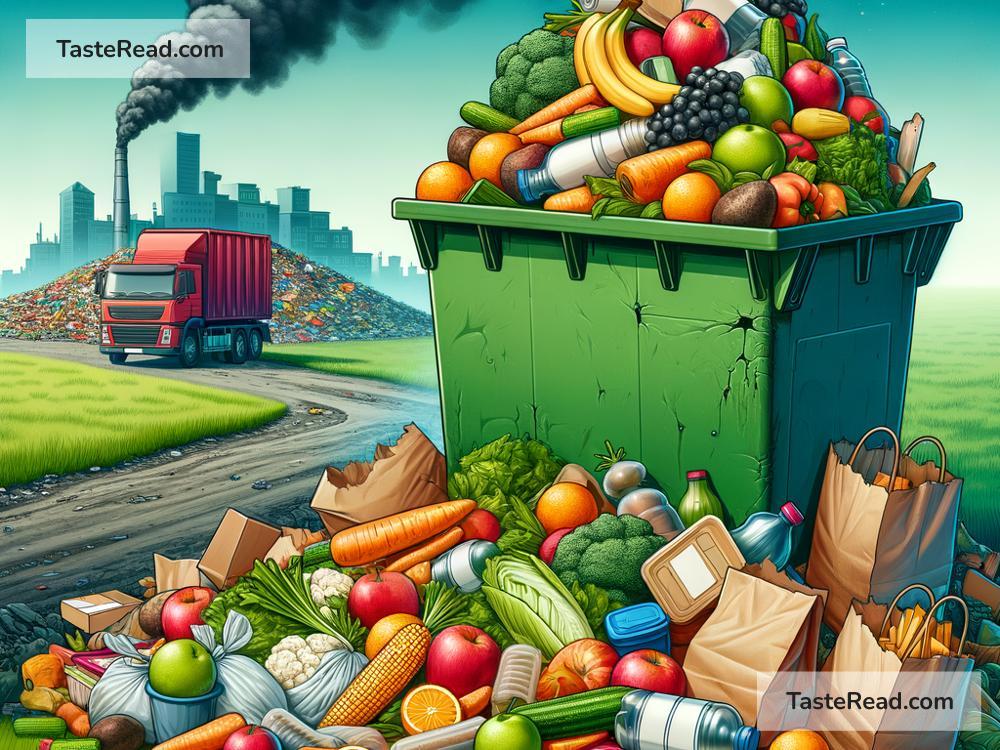The Impact of Food Waste on the Environment
Every day, people throw away tons of food across the world. It happens in homes, restaurants, supermarkets, and even on farms. While it might not seem like a big deal, food waste has a massive impact on the environment. In this blog, we’ll talk about what food waste is, why it happens, how it harms the planet, and simple steps we can take to reduce it.
What Is Food Waste?
Food waste occurs when perfectly good food is thrown away instead of being eaten or reused. This might be leftover food in your fridge, fruits and vegetables that don’t look “perfect” and are tossed out, or surplus food in grocery stores that isn’t sold. Food is also wasted during farming, transportation, and storage, meaning it never even reaches people’s plates.
According to the Food and Agriculture Organization (FAO), about one-third of all food produced in the world is wasted every year. That’s approximately 1.3 billion tons of food! It’s a shocking figure, especially when you consider that millions of people go hungry every day.
Why Does Food Waste Happen?
There are many reasons food gets wasted:
- Overbuying: People often buy more food than they need, leading to spoiled leftovers.
- Expiry Dates: Some people misunderstand “best before” dates and throw away food that is still safe to eat.
- Storage Problems: If food isn’t stored properly, it can go bad quickly.
- Cosmetic Standards: Many fruits and vegetables are thrown out because they look odd or misshapen. Supermarkets and customers tend to favor visually “perfect” produce.
- Overproduction: Sometimes farmers grow more food than they can sell, which leads to waste.
- Uneaten Restaurant Portions: Large serving sizes in restaurants often result in uneaten food being thrown away.
Understanding these causes is the first step in fighting food waste.
How Food Waste Harms the Environment
Food waste isn’t just about wasting money or resources—it’s also a serious environmental problem. Here are a few ways it impacts the planet:
-
Wasted Resources: Growing food uses a lot of resources like water, energy, and land. For example, if a tomato is thrown away, all the water used to grow it and the energy used to transport it have been wasted. Food production also uses fertilizers and pesticides, which can harm the environment.
-
Greenhouse Gas Emissions: When food waste ends up in landfills, it rots and produces methane gas. Methane is a greenhouse gas that is much stronger than carbon dioxide. This gas traps heat in the atmosphere, contributing to global warming.
-
Loss of Biodiversity: Clearing land to grow food often destroys habitats for animals and plants. When food is wasted, this destruction was for nothing.
-
Pollution: Food waste also leads to pollution. For example, transporting wasted food generates carbon emissions. Packaging and plastic used in food production are often discarded, adding to the waste problem.
All these effects hurt the planet and make it harder to fight climate change.
Simple Solutions to Reduce Food Waste
The good news is that everyone can help to reduce food waste. Small changes in our daily habits can have a big impact. Here are some easy ways to get started:
-
Plan Your Meals: Before you go grocery shopping, plan what you’ll eat for the week. Make a list of only what you need so you don’t buy too much.
-
Use Leftovers: Instead of throwing away leftovers, turn them into new meals. For example, leftover vegetables can become soup or a stir-fry.
-
Understand Food Labels: Learn the difference between “best before” and “use by” dates. “Best before” means the food is at its best quality but can still be safe to eat. “Use by” means the food needs to be eaten before that date.
-
Store Food Properly: Keep food fresh for longer by storing it in the right way. For example, fruits like bananas and apples ripen faster when stored together, so keep them apart.
-
Support Ugly Produce: Buy “ugly” fruits and vegetables that are just as tasty and nutritious as perfect-looking ones. Many stores now sell these at lower prices.
-
Compost: If you do have food scraps, compost them instead of tossing them in the trash. Composting turns food into soil that can nourish plants instead of releasing methane in landfills.
-
Share Food: If you have extra food that you won’t eat, give it to friends, neighbors, or local charities. Apps like Too Good To Go and Olio also help connect people to surplus food.
-
Raise Awareness: Talk about food waste with your friends and family. When more people know about its impact, they’re more likely to take action.
Final Thoughts
Food waste is not just a waste of food—it’s a waste of resources, energy, and money. It also damages the environment and adds to climate change. While the problem is big, the solution starts small. By making thoughtful choices about how we shop, store, and eat our food, we can all help to reduce food waste and protect the planet.
Let’s remember that every little step counts. Whether it’s eating leftovers, buying only what you need, or composting scraps, these actions make a positive difference. Together, we can create a world where less food goes to waste and more resources are saved for future generations.


